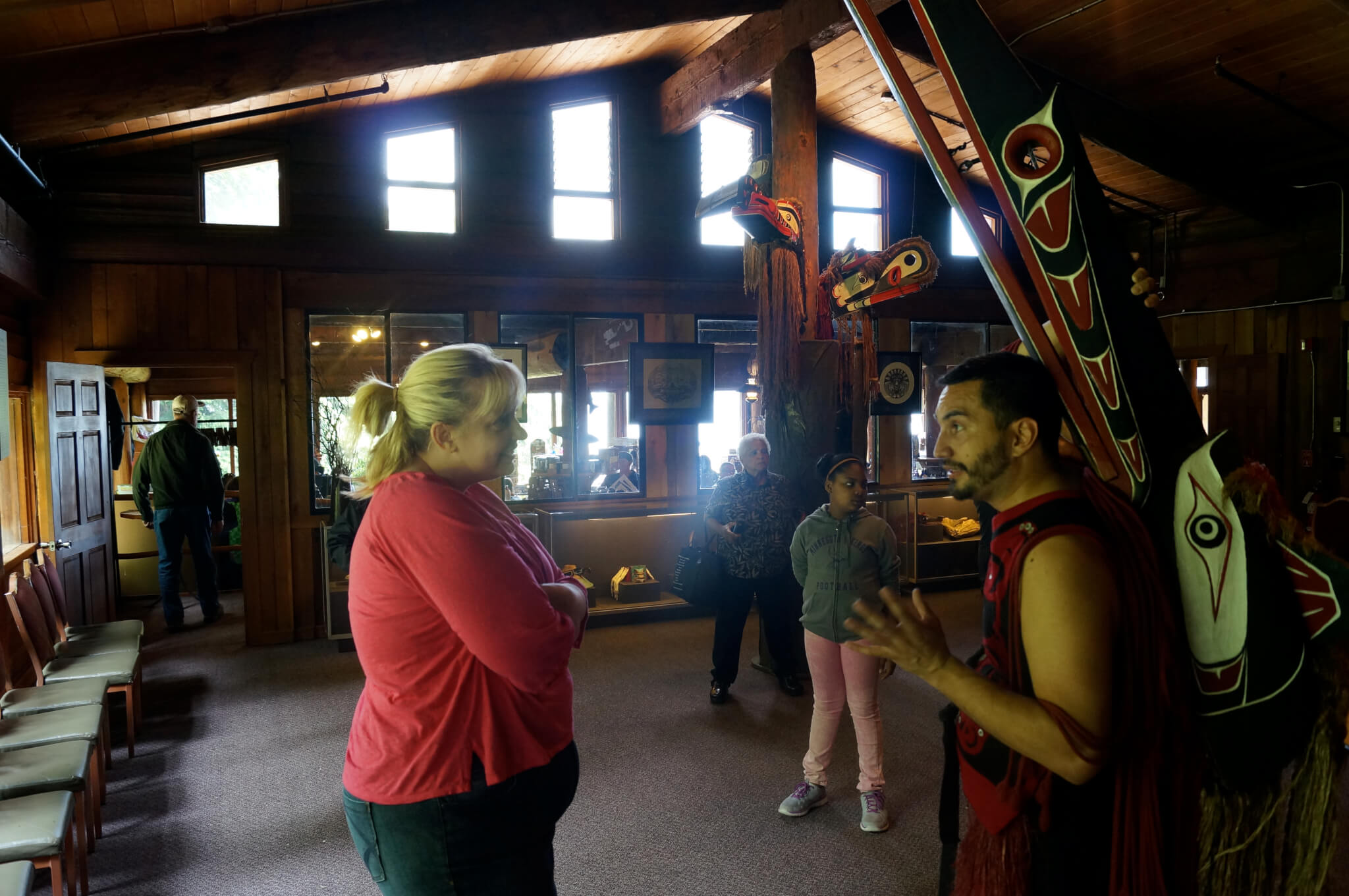 Our family took a trip recently to Tillicum Village, a tourist attraction in Seattle that we’d never done. We took a boat out to Blake Island, an uninhabited island which is a state park. We had a meal, then got to see a show of Coast Tribes storytelling and dance. It was a really mythic experience; I can’t believe I waited this long to do it! After the show was over, I had the opportunity to talk briefly with one of the dancers, who is a member of the Haida tribe, of Western Canada and Southeast Alaska. He told me a wonderful Haida myth, and we talked a little about Joseph Campbell. It was such a pleasure to meet him, and it got me thinking about the wonderful complexity of the Haida mythology. When I was in graduate school, I wrote a paper about the Haida for a class called “Native Mythologies of the Americas”, and I went back and reread my paper when we got home. Some good stuff in it!
Our family took a trip recently to Tillicum Village, a tourist attraction in Seattle that we’d never done. We took a boat out to Blake Island, an uninhabited island which is a state park. We had a meal, then got to see a show of Coast Tribes storytelling and dance. It was a really mythic experience; I can’t believe I waited this long to do it! After the show was over, I had the opportunity to talk briefly with one of the dancers, who is a member of the Haida tribe, of Western Canada and Southeast Alaska. He told me a wonderful Haida myth, and we talked a little about Joseph Campbell. It was such a pleasure to meet him, and it got me thinking about the wonderful complexity of the Haida mythology. When I was in graduate school, I wrote a paper about the Haida for a class called “Native Mythologies of the Americas”, and I went back and reread my paper when we got home. Some good stuff in it!
Because the Haida and other Coast Tribes were rich in natural resources, living on the beach and in the rain forest as they did, they had more time than other tribes for stories and art, and is a reason why we have such a rich tradition of myth to come out of this part of the world.
One of the aspects of their mythic system that I found so interesting is the comfort with living in the between places, or the liminal, in depth psychological terms. By living on the beach, between the open ocean and the forest, the Haida live both in the center of the world and at it’s edges. In the Haida language, they lived at Xhaaydla Gwaayaay, or, The Islands on the Boundary Between Worlds. They are a culture of the borderland, between animals and gods. For the Haida, the realm of the gods lies beneath the waves, rather than in a far-off sky haven such as Mount Olympus. The spirit-beings of the orca, salmon, and sea lion all played important roles in the stories of the Haida. Their land was a land of water, water which lay just off their beach villages, which fell constantly from the sky, and which ran through the forest, nourishing and giving life to all it’s creatures; human, animal and mythic. From Robert Bringhurst’s A Story as Sharp as a Knife:
“The mythworld is structured like a forest or an animal. It wakes and feeds and sleeps and dreams and changes. And it is made of separate parts that live and die. These poems, when they were oral, did the same. The poems themselves were ecological components of the world they describe. It can be navigated by traveling through space, but not through a space that obeys Euclidean rules.” (page 133)
The beginning of the tale happened when the human took a small, sideways step into the world of the other, which took him outside the interstitial space of the world of the human into the forest, ocean, or sky world of the animal or god. This small step served the same function thematically as our classic beginning “once upon a time”.
Tomorrow, I’ll write about Raven and his role in Haida culture. Stay tuned!
